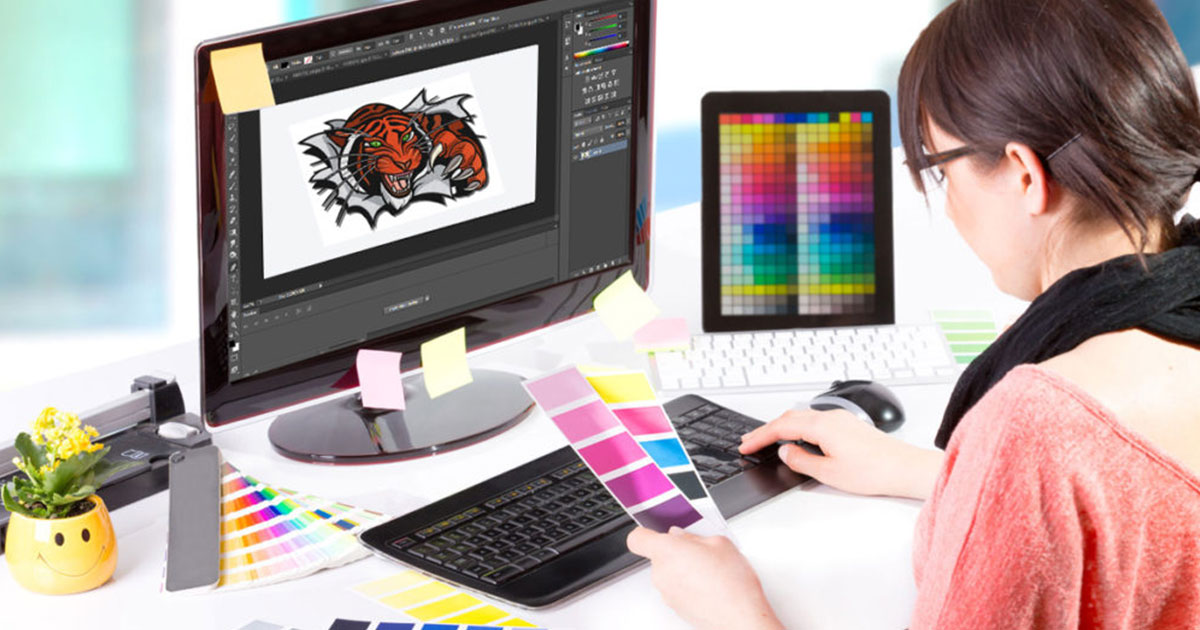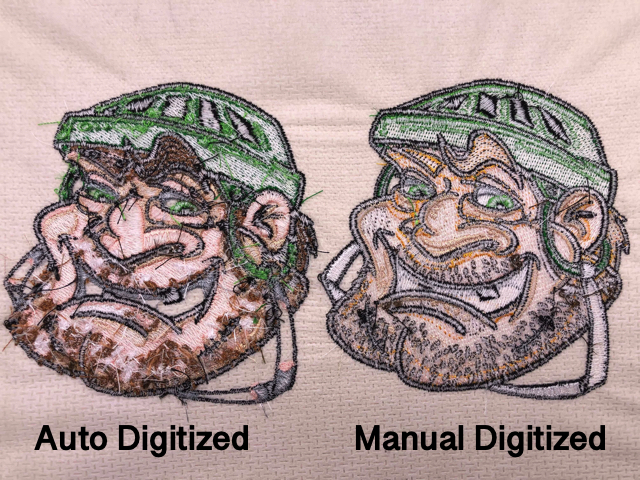Understanding the Embroidery Digitizing Process: Your Ultimate Overview
Embroidery digitizing is a precise craft that requires precision and experience to translate elaborate styles into digital formats for device embroidery. As artisans embark on this journey to understand the needlework digitizing procedure, a thorough understanding of the essentials establishes the foundation for quality.

Recognizing Needlework Digitizing Essentials
Needlework digitizing essentials form the foundation upon which intricate styles are equated right into machine-readable layouts for specific sewing. This first action in the needlework digitizing procedure is critical for making certain that the last embroidered product is a faithful representation of the original style. Comprehending embroidery digitizing basics involves grasping key concepts such as stitch kinds, sew instructions, density, underlay, and pull settlement.
Sew kinds play a vital role in determining the aesthetic and textural end result of the stitched style. By selecting the suitable stitch type, whether it be satin, fill, or running stitch, digitizers can attain the wanted result and boost the general high quality of the embroidery. In addition, sew direction affects the flow and measurement of the style, while density figures out the spacing and coverage of the stitches.
Moreover, underlay sewing gives security to the style by protecting the fabric and protecting against distortion during the embroidery procedure. Draw compensation is another crucial factor to consider to combat the natural propensity of fabric to agreement when stitched. Grasping these needlework digitizing fundamentals is fundamental for creating professional-quality stitched products.
Selecting the Right Digitizing Software Program
Selecting the suitable digitizing software program is a vital choice that significantly affects the effectiveness and top quality of the embroidery digitizing process. Digitizing for Embroidery. When selecting the ideal digitizing software program, it is vital to take into consideration variables such as the complexity of designs you plan to produce, the user-friendliness of the software application, the degree of consumer assistance supplied, and the compatibility with your needlework device
There are different digitizing software program alternatives readily available in the market, ranging from basic programs for beginners to advanced software for expert digitizers. Some prominent options include Wilcom EmbroideryStudio, Hatch Embroidery Software, and PulseID. These software supply a wide array of devices and attributes to aid you develop complex styles effortlessly.
Before deciding, it is recommended to explore the different software application choices through free tests or demonstrations to figure out which one finest suits your demands. In addition, checking out reviews and looking for referrals from knowledgeable digitizers can offer valuable understandings into the strengths and weak points of each software (Digitizing for Embroidery). By carefully evaluating your needs and comparing the features of various digitizing software application, you can make an informed choice that boosts your embroidery digitizing operations
Digitizing Devices and Techniques

Optimizing Style Settings for Embroidery
Grasping the complexities of style settings is fundamental in achieving optimal lead to the needlework digitizing procedure, structure upon the structure laid by understanding digitizing tools and techniques. When optimizing layout setups for needlework, it is important to take into consideration variables such as stitch kind, density, underlay, draw settlement, and enrollment. Stitch type selection influences the total feel and look at this site look of the design, with alternatives like satin, fill, and running stitches supplying various textures and effects. Thickness refers to the spacing and thickness of stitches, affecting the layout's protection and sturdiness. Proper padding sewing supplies stability and prevents textile distortion, particularly for complex layouts or on stretchy materials. Draw payment readjusts for material stretch during sewing, making sure accurate style replication. Enrollment settings straighten different components of the style accurately, preserving overall layout stability. By fine-tuning these design settings, embroiderers can boost the quality and accuracy of their embroidered productions.

Troubleshooting Common Digitizing Issues
When experiencing usual digitizing issues during the needlework process, it is necessary to understand the source and execute reliable solutions immediately. One usual problem is stitch thickness issues, where stitches might be also thick, causing the fabric to tighten, or as well thin, resulting in voids in the layout. Adjusting the stitch density setups in the digitizing software program can help fix this problem.
An additional frequent challenge is string breaks during the needlework procedure. This can take place because of numerous factors such as wrong Our site tension settings, dull needles, or utilizing low-quality string. Guaranteeing appropriate upkeep of the needlework equipment, consisting of normal needle adjustments and stress adjustments, can minimize the occurrence of thread breaks.
Additionally, style enrollment mistakes can lead to misaligned components within the needlework style. Examining the layout placement in the digitizing software program and making essential adjustments before stitching can assist in avoiding this issue. By dealing with these common digitizing issues quickly and efficiently, you can guarantee a smoother needlework process and top notch ended up items.
Verdict
Finally, understanding the needlework digitizing procedure needs a strong understanding of the essentials, the appropriate selection of software application, and understanding of tools and techniques. Maximizing style settings and troubleshooting common digitizing issues are crucial action in ensuring high-quality needlework outcomes. By adhering to these actions diligently, one can accomplish accuracy and performance in the digitizing procedure.